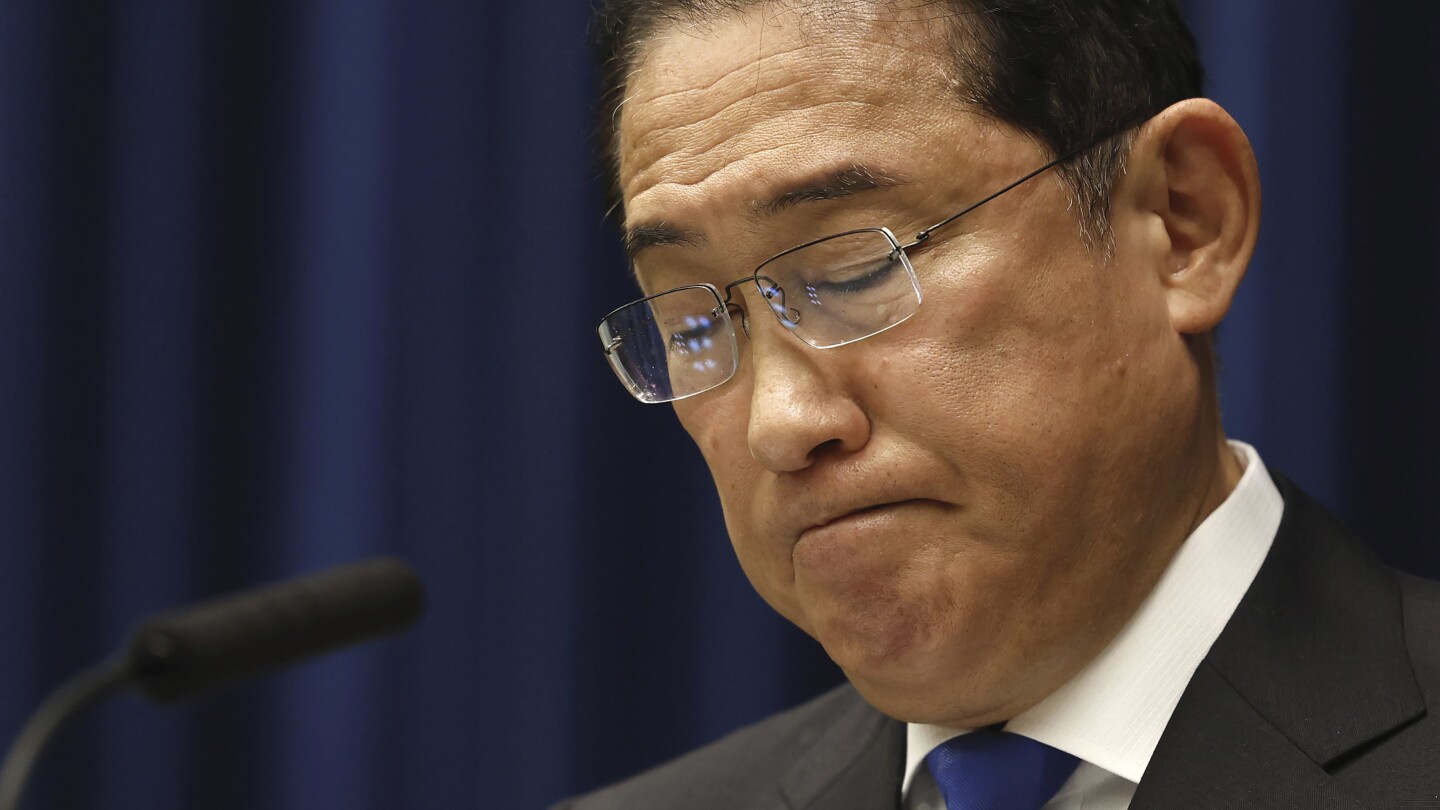TOKYO (AP) — Japan’s embattled Prime Minister Fumio Kishida surprised the country Wednesday by announcing that he’ll step down when his party picks a new leader next month.
His decision clears the way for his governing Liberal Democratic Party to choose a new standard-bearer in its leadership election next month. The winner of that election will replace Kishida as both party chief and prime minister.
A new leader could help the party shake off scandals that have dogged Kishida’s government, and some see a chance for the country to select its first female prime minister.
Here’s a look at how the new leader will be chosen, and what it could mean.
What happens next?
Kishida announced plans not to run just days before the LDP is expected to set a date for its triennial leadership vote, which must take place in September.
Kishida will remain party president and prime minister until his successor is elected.
With the LDP in control of both houses of parliament, the next party leader is guaranteed to become prime minister.
Some political watchers say the next general could come soon after LDP has a fresh leader, but the government can choose to hold it any time before the current term of the lower house ends in October 2025.
Why is Kishida stepping down?
A series of local election losses earlier this year sparked calls within his party to have a new face to turn around support before the next national election, which a prime minister can call any time before October 2025.
Kishida said a series of scandals have “breached” the public’s trust, and that the party needs to demonstrate its committment to change.
He said “the most obvious first step is for me to bow out.”
The most damaging scandal centered on failure to report political donations by dozens of the party’s most influential members, and resurfaced controversy over the LDP’s decades-old ties with the South Korea-based Unification Church.
How will the party choose its next leader?
Most of Japan’s voters won’t have a say as the LDP chooses a leader in a vote that’s confined to the party’s 1.1 million dues-paying members.
They’ll vote in a system that divides power between the party’s elected lawmakers and its membership at large, with each group getting 50% of the vote.
While LDP leadership votes were long seen as dominated by the party’s powerful factional leaders, experts say that’s less certain as all but one of the formal factions announced their own dissolution in the wake of the party’s corruption scandals, in a move led by Kishida.
Who are the possible candidates?
It’s not clear yet who’s leading the race to replace Kishida, with speculation surfacing the names of several senior LDP members.
Three of those names belong to women — something that raises hopes for a breakthrough in Japan’s male-dominated politics.
Experts say that the LDP’s need to change its image could push it to choose a female prime minister. Only three women have run for the party’s leadership in the past, two of whom ran against Kishida in 2021.
Only 10.3% of the members of the lower house of Japan’s parliament are women, putting Japan 163rd for female representation among 190 countries examined in a report by the Geneva-based Inter-Parliamentary Union in April.
How about the general election?
The LDP’s troubles could spill into the general election, but Japan’s fractured opposition may have difficulty capitalizing on the situation.
Experts say voters may want to punish LDP over its scandals, but don’t see opposition parties as viable leadership alternatives.
The main opposition Constitutional Democratic Party of Japan has scored some victories in local elections this year, in part helped by LDP scandals, but it’s struggled to come up with policies that draw contrasts with the ruling coalition.

